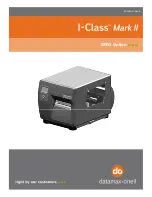
15
Owner’s Manual
Ov
er
view
Hook
up
Tut
orials
Resour
ces
English
Français
Español
Deutsch
Tut
orials
A Brief Tutorial on Dynamics Processing 3.1
The world’s best mixing consoles offer compression on every
channel because most instruments need some form of compression,
often very subtle, to be properly heard in a mix.
3.1.2
Compression Demystified
Punch, apparent loudness, presence—these are just three of the
many terms used to describe the effects of compression.
Compression is a form of dynamic-range (gain) control. Audio signals
have very wide peak-to-average signal-level ratios (sometimes referred
to as dynamic range, which is the difference between the loudest level
and the softest level). The peak signal can cause overload in the audio-
recording or sound-reinforcement chain, resulting in signal distortion.
A compressor is a type of amplifier in which gain is dependent on the signal level
passing through it. You can set the maximum level a compressor allows to pass
through, thereby causing automatic gain reduction above some predetermined
signal level, or threshold. Compression refers, basically, to the ability to reduce, by a
fixed ratio, the amount by which a signal’s output level can increase relative to the
input level. It is useful for lowering the dynamic range of an instrument or vocal,
making it easier to record without distorting the recorder. It also assists in the mixing
process by reducing the amount of level changes needed for a particular instrument.
Take, for example, a vocalist who moves around in front of the microphone while
performing, making the output level vary up and down unnaturally. A compressor
can be applied to the signal to help correct this recording problem by reducing
the louder passages enough to be compatible with the overall performance.
How severely the compressor reduces the signal is determined by
the compression ratio and compression threshold. A ratio of 2:1 or
less is considered mild compression, reducing the output by a factor
of two for signals that exceed the compression threshold.
As the compression threshold is lowered, more of the input signal is
compressed (assuming a nominal input-signal level). Care must be taken
not to overcompress a signal, as too much compression destroys the
acoustic dynamic response of a performance. (That said, overcompression
is used by some engineers as an effect, with killer results!)
Compressors are commonly used for many audio applications. For example:
A kick drum can get lost in a wall of electric guitars. No matter how
much the level is increased, the kick drum stays lost in the “mud.” A
touch of compression can tighten up that kick-drum sound, allowing
it to punch through without having to crank the level way up.
A vocal performance usually has a wide dynamic range. Transients (normally
the loudest portions of the signal) can be far outside the average level of the
vocal signal. Because the level can change continuously and dramatically,
it is extremely difficult to ride the level with a console fader. A compressor
automatically controls gain without altering the subtleties of the performance.
A solo guitar can seem to be masked by the rhythm guitars. Compression can
make your lead soar above the track without shoving the fader through the roof.
Summary of Contents for ADL 700
Page 4: ...Central Station ...
Page 30: ......














































